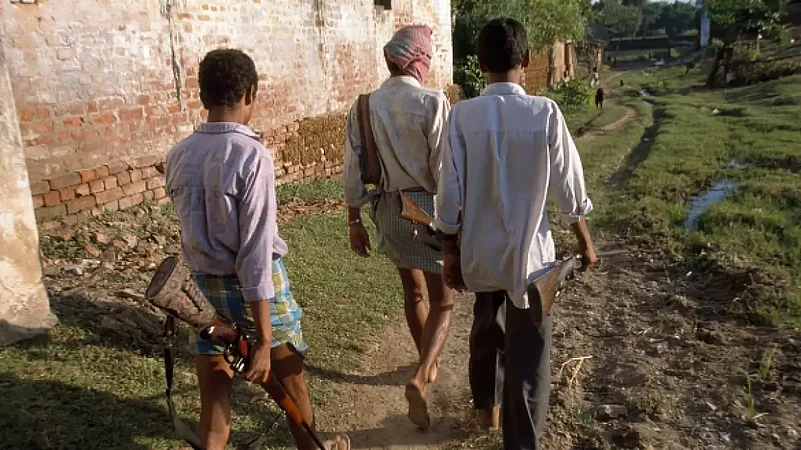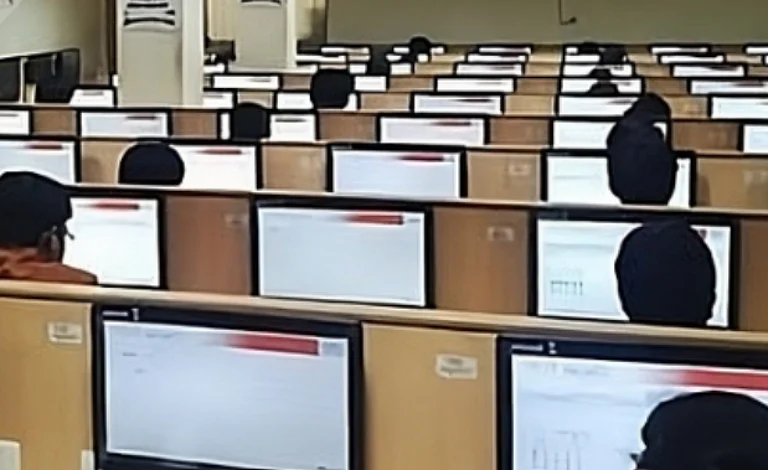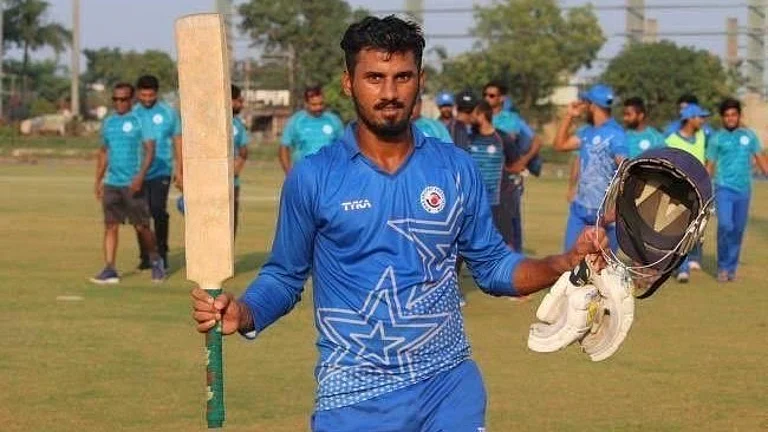The Bathani Tola massacre, which took place in the small village of Bathani in Bihar 27 years ago, stands as a haunting testament to the deeply entrenched caste-based hierarchy that persists in rural India. On July 11, 1996, a ruthless private army, consisting of upper-caste landlords, perpetrated a horrifying act of violence, brutally massacring eight children, 12 women, and one man from the landless Dalit community residing in the village. The incident not only exposed the abhorrent face of caste-based discrimination but also raised pertinent questions about the social structure prevailing in rural Bihar.
Fourteen years later, on July 11, 2010, a memorial was erected in Bathani Tola to commemorate the lives lost in the massacre. The memorial, crafted by the talented artist Manoj Pankaj, portrays the martyrs emerging from stone, symbolizing their indomitable spirit and aspirations. At the centre of the sculpture, a child holds a butterfly, its wings adorned with a hammer and sickle, embodying the dreams and resolute strength of the impoverished masses in the country. The names and ages of the martyrs engraved on the memorial provoke contemplation regarding what it was about these individuals that the perpetrators found so intolerable. What was it about innocent children and women who merely aspired to improve their community that led to their slaughter?
During the time of the Bathani Tola massacre, the Ranvir Sena, led by Brahmeshwar Singh, attempted to justify their heinous act through misguided arguments. They propagated the baseless belief that Dalit women give birth to Naxals, and children eventually grow up to become Naxalites. This warped ideology reveals the casteist mindset and the lengths to which the oppressors would go to maintain their dominance.
In the aftermath of the tragedy, there was a surge of intellectuals and cultural figures advocating for unity among marginalised communities, including Dalits, Muslims, and other oppressed groups, to counter the radical Hindutva Forces. However, the ground reality often belies these lofty ideals as intellectuals overlook the potential for unity among these communities.
Naeemuddin, who lost six family members in the massacre, sought refuge in Bathani Tola after feeling threatened in the neighbouring village of Badki Khadanv. The landlords in Badki Khadanv held a grudge against Naeemuddin’s family and others ever since a young man named Mohd. Yunus became Mukhia, advocating for unity among Dalits, Muslims, and other marginalized communities. This unity became a thorn in the side of feudal forces. When the landlords attempted to seize land belonging to the Imambada, a clash ensued, prompting the Ranvir Sena to attack peaceful villagers returning from a march. The resistance put up by these villagers resulted in the death of two Ranvir Sena goons who underestimated their resilience.
In retaliation, the Ranvir Sena targeted and displaced numerous Muslim and Dalit families in Badki Khadanv, leading Naeemuddin and his family to seek safety in Bathani Tola. The Ranvir Sena continued to launch repeated attacks on the village, while the police, local administration, and government turned a blind eye. Eventually, they succeeded in carrying out a seventh attack, perpetrating the cold-blooded murder that scarred the village forever.
The day of the massacre was a nightmare of unimaginable horror. Innocent lives were brutally taken away, with even infants and pregnant women falling victim to the savagery. The murderers callously tossed a three-month-old baby into the air and slashed her neck, while a pregnant woman and her unborn child were killed when her belly was grotesquely slit open. Naeemuddin’s sister, holding onto his daughter, was shot, leading to the deaths of both. Lukhia Devi, a 70-year-old washerwoman, was not spared, and Shrikishun Chaudhary’s wife and two young daughters were ruthlessly slaughtered. The scars of this massacre run deep, haunting the survivors, and fueling their demand for justice.
The Bathani Tola massacre is not an isolated incident but rather a reflection of the deep-rooted social and political malaise that plagues rural India. It exposes the grave injustices perpetuated by the caste-based hierarchy, where the lives of marginalized communities are treated as disposable, and the perpetrators of violence often enjoy protection from influential political forces.
In the early 1980s and ‘90s, Bihar witnessed a disheartening continuation of attacks on democratic rights, regardless of the frequent discussions surrounding these issues. The state machinery, including the police, administration, government, and judiciary, has been complicit in suppressing these movements. The collusion between the authorities and the entrenched feudal elites, comprising landowners, has resulted in a series of violations ranging from intimidation and false cases to mass killings and the destruction of settlements.
In a series of horrifying incidents that unfolded across various districts in Bihar, a wave of political violence has claimed the lives of numerous individuals, leaving the state in a state of shock and anguish. Feudal criminals, often protected by influential figures, have orchestrated attacks targeting supporters of the Indian People's Front (IPF), Communist Party of India Marxist-Leninist (CPI-ML), and other opposition groups.
There are a lot of incidents, which date back to March 1990, that have been marred by allegations of police complicity, delayed response, and a climate of impunity.
Chiraura Wadipur Massacre, Patna:
Feudal criminals have been implicated in a series of violent incidents in Chiraura Wadipur, Patna, leading to the deaths of three supporters of the IPF in March 1990. The first victim, Rajendra Mochi, was killed in Vadipur on March 8th, 1990, followed by the murder of Babulal Paswan in Chiraura village on March 30th, 1990. The third victim, Kuldeep Paswan, also lost his life in the same series of events. These acts of violence were motivated by a movement seeking the liberation of the land from the clutches of feudal lords who held it illegally.
Naubatpur police station in-charge, Chandrika Singh, has been directly implicated in these incidents and faced suspension due to intense public pressure. However, to the dismay of the affected communities, she was subsequently transferred to the position of in-charge of Paliganj police station. Tragically, Chandrika Singh was allegedly involved in the killing of Anil Kahar, a CPI (ML) worker, in Siddhipur village on September 25th, 1990.
Harlakhi Tragedy, Madhubani:
A tragic incident unfolded on March 20, 1990, in the Harlakhi block headquarters of the Madhubani district, where a protest procession led by the Communist Party of India turned into a scene of violence and bloodshed. The demonstration was organized to denounce the booth capturing that had taken place in the area. However, instead of addressing the concerns of the protesters, the situation escalated dramatically.
The police, along with anti-social elements allegedly affiliated with the Congress (I), confronted the procession near Umgaon block. Shockingly, six individuals lost their lives during this clash. Reports indicate that the police and their associates resorted to brutal tactics, beating the protesters mercilessly. Jaishankar Shah, who was among the injured, suffered a horrific fate, being beaten to death by the police using rifle butts and boots.
Lakhawar Massacre, Jehanabad:
A shocking incident took place in Lakhawar village of Ghosi block in Jehanabad on March 26, 1990, which resulted in the brutal killings of six impoverished farmers who were staunch supporters of the Communist Party of India (CPI). The perpetrators of this heinous act were feudal criminals who operated under the protection and patronage of MLA Jagdish Sharma.
The victims, namely Upendra Prasad, Yugal Yadav, Rambhavan Yadav, Babuchand Yadav, and Haricharan Yadav were targeted solely because of their affiliation with the CPI and their active involvement in advocating for the rights of marginalized communities. This tragic incident sheds light on the prevailing social and political challenges faced by farmers and the suppression of dissenting voices in the region.
Dariyapur Massacre, Patna:
Dariyapur village in the Naubatpur area of Patna district witnessed a horrific incident on December 17, 1990, when a private army known as ‘Kisan Sangh’, supported by feudal lords, launched a savage attack on landless farmers associated with the IPF (Indian People's Front). This incident sheds light on the pervasive issues of feudalism and the exploitation of marginalized communities.
What makes this incident even more appalling is the complicity of the police, who intentionally arrived late despite being informed promptly. This deliberate delay allowed the armed gang to carry out their assault unhindered. It raises serious concerns about the impartiality and accountability of the law enforcement agencies in the region.
The victims of this brutal attack were Ramchandra Paswan, Virdev Mochi, Babuchand Mochi, and Badu Bind, who were landless farmers struggling for their rights. To add to the gravity of the situation, reports suggest that the police secretly burned the bodies of the deceased, further highlighting the deep-rooted corruption and abuse of power.
Tishkhora Massacre, Patna:
In a shocking incident on February 19, 1991, Tishkhora village in the Masodhi police station limits of Patna district became the target of a brutal attack orchestrated by the infamous ‘Kisan Sangh’. More than 100 armed men, accompanied by police personnel from Tulsi Chak Camp and Charma Camp, launched a violent assault on the village. The consequences were devastating, resulting in the loss of 14 lives, including innocent villagers attending a wedding at the house of Lakhan Pandit.
The authorities initially attempted to manipulate the narrative, portraying the incident as an encounter between the IPF (Indian People's Front) and the farmers' union. However, evidence strongly indicates that it was a premeditated attack, designed to instil fear and assert dominance. The senior police superintendent himself admitted to the delayed response, raising suspicions of a deliberate attempt to protect the perpetrators.
The victims of this heinous act of violence included Bhushan Pandit, Banwari Mochi, Chandradev Mochi, Ravidas, Fagu Rajak, Jodhan Thakur, Tulsi Singh, Yugeshwar Mochi, Ramchandra Sadhu Pandit, Dulari Gop, Rajeshwar P. Verma alias Dinkar Ji, Girja Yadav, Shailendra Paswan, and Sadhusharan Yadav. Their lives were tragically cut short, leaving behind grieving families and a community traumatized by this senseless act.
Harpur-Saidabad Tragedy, Samastipur:
On the night of May 30, 1991, police and CRPF jawans, led by an inspector, opened fire on a marriage ceremony in Harpur-Saidabad village of Shahpur Patori police station, Samastipur district. The unapproved entry of armed personnel, along with local goons, resulted in the deaths of four individuals. The police and goons also subjected attendees, including women, children, and the elderly, to beatings, looting, and house destruction.
There are numerous cases in points like Deo-Sahiyara, where, on the night of June 22, 1991 a feudal gang allegedly attacked and killed 14 IPF men in Deo and Sahiyara villages of Tarari area under the Bhojpur district. Another such incident took place in Sangrampur, Saran where about 60 armed men allegedly attacked and killed 4 people in Sangrampur village of Taraiya area under Saran district on the night of July 12, 1991.
Bahadurganj, Godrama, Pothiya, Sawanbigha, Karkat, Teendiha, Murli, Hadri, Bahdura, Kesari, Pahadpura,Vishnupur, Belaganj, Bairiya, Benipatti, Benibagh, Lahiya-Narayanpur — the most common thing about these villages are they all suffered the caste-based violence by feudal forces. These are just a few instances of the heinous violence that has plagued Bihar, claimed innocent lives, and undermined the democratic fabric of the state. The perpetrators, often protected by influential figures and political affiliations, have operated with impunity, leaving grieving families and marginalized communities in despair.
Violation of democratic rights granted by the Constitution in Bihar has been a matter of deep concern for a long time. And the irony is that, historically, the more the attacks on these rights were discussed, the more the pace of attacks on them increased.
Bihar is still stuck in a rigid feudal structure where it is a centuries-old tradition of depriving Dalits, OBCs, and other weaker sections of the minimum democratic rights, especially in the villages. But in the last few decades, an important difference has come that these sections have increased consciousness about their democratic rights and they are organizing and agitating in different forms. Mainly social prestige, minimum wages, rights on land, police oppression and corruption, the overall development of villages and the state and many common democratic questions are also associated with these movements.
(Author is an independent journalist whose work is centred on conflicts in India. Views expressed are personal.)



























